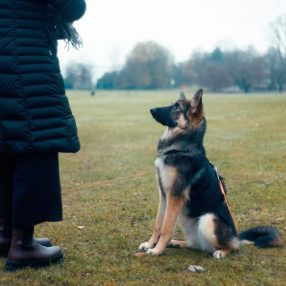
FACTS*
- In the vicinity of 6.5 million companion animals enter U.S. animal shelters nationwide every year. Of those, roughly 3.3 million are dogs and 3.2 million are cats. Estimates show that the number of dogs and cats entering U.S. shelters annually has declined from 7.2 million in 2011. The biggest decline was in dogs (3.9 million to 3.3 million).
- Each year, close to 1.5 million shelter animals are euthanized (670,000 dogs and 860,000 cats). Good news is that the number of dogs and cats euthanized in U.S. shelters annually has declined from approximately 2.6 million in 2011. This decline can be partially explained by an increase in the percentage of animals adopted and an increase in the number of stray animals successfully returned to their owners.
- Approximately 3.2 million shelter animals are adopted each year (1.6 million dogs and 1.6 million cats).
- About 710,000 animals who enter shelters as strays are returned to their owners. Of those, 620,000 are dogs and only 90,000 are cats.
According to the ASPCA’s National Rehoming Survey, pet problems are the most common reason owners re-home pets. Pet problems were defined as problematic behaviors, aggressive behaviors, grew larger than expected, or health problems owner couldn’t handle.
Animal homelessness is two-fold:
1) More animals exist than there are forever homes for, and…
2)People not adopting for the life-time of that animal, no matter what (as cited above)!

Regarding the not enough homes issue, this is where spay/neuter plays a major role! For every human being born, 15 puppies and 45 kittens are born. How can we possibly provide them all safe and loving forever homes? Due to the frequent heat cycles in cats (every 3 weeks during Kitten Season, March – September), one non-spayed female cat and her offspring can produce close to 400,000 cats in seven years! Dogs generally only have 2 cycles annually, but due to litter size, one non-spayed canine and her offspring can produce 67,000 dogs in almost that same time span.
 Sadly, many animals die giving birth when bred before 6 months of age as they are still babies themselves. In the case of large-headed breeds (pugs and bulldogs for instance), many pups are too large to be delivered naturally, and if they are not delivered by Caesarean, with the help of a Veterinarian, both the mom and pups can die.
Sadly, many animals die giving birth when bred before 6 months of age as they are still babies themselves. In the case of large-headed breeds (pugs and bulldogs for instance), many pups are too large to be delivered naturally, and if they are not delivered by Caesarean, with the help of a Veterinarian, both the mom and pups can die.
Pet overpopulation is the number one killer of pets! Every 11 seconds a dog or cat is euthanized in the United States. With 80,000 pets born each day versus only 10,000-15,000 people, there will never be enough humans to care for them. Limiting their population growth is the best way to prevent animal homelessness, curb certain diseases, and keep our pets safe.
 Spaying and neutering can decrease AGGRESSIVENESS in many pets as hormones no longer rage since the source of their production has been removed. However, your pet still remains protective of his home and family as if he was prior to surgery.
Spaying and neutering can decrease AGGRESSIVENESS in many pets as hormones no longer rage since the source of their production has been removed. However, your pet still remains protective of his home and family as if he was prior to surgery.
Spay/neuter can decrease SPRAYING (urine marking) particularly by male cats who no longer feel the need to mark their territory. It can also decrease an animal’s desire to roam in search of a mate and therefore, your pet stays safely at home. Studies show that 80% of all dogs and cats hit by cars are un-neutered/intact males!

Spaying females can lower their risks of mammary and uterine cancer as well as pyometra (an infection of the uterus that can erupt into an emergency situation).
Neutering males can lower prostate issues, so just check with your Veterinarian to find out what age is best to have your pet altered. Most animals go home the same day as surgery and suffer no ill effects (as long as you prevent them from picking at their stitches).
- SPAYING (ovariohysterectomy) includes the removal of the ovaries, fallopian tubes and uterus. General anesthesia is necessary.
- NEUTERING removes the testicles but will allow your dog to retain his own unique personality. General anesthesia is required, but neuter patients recover more quickly than their female counterparts as neutering is not considered major surgery since it is not performed deep in the abdominal cavity.
Non-surgical neutering is in development, so stay tuned to breakthroughs.
Confirm local laws as spay/neuter may decrease the COST OF LICENSING in your area or may actually be mandatory at a certain age for all pets. Low cost clinics and vouchers from humane organizations are available to help those having difficulty paying for spay/neuter surgery. In the long run, the medical cost is much cheaper than caring for a litter of puppies or kittens.
Common Myths Dispelled
Spaying/Neutering DOES NOT make your pet fat or lazy – lack of exercise and overfeeding does.
Pets DO NOT need to have one litter to settle down. Having a litter will not improve your dog or cat’s health or change their personality. Actually, pregnancy and nursing can sometimes cause pets to become tired & irritable.
DON’T leave your pet unaltered so that your child can see the “miracle of birth.” Most pets hide when giving birth and even if you find good homes for your litter, you may deny homes to animals that have already been born. There are plenty of videos available to learn these life lessons.
Do your research! Find a veterinarian, preferably one who is AAHA approved and Fear-Free Certified so that you are getting the best for your furry family member. Learn local requirements as well as what timing your medical professional suggests for surgery, then follow instructions implicitly to make it as complication-free as possible for your dog or cat.
Sadly, the second major cause of animal homelessness is due to irresponsible owners and is a result of pets once adopted, not retaining their homes for their life-time. When you adopt a dog or cat, you are adopting a family member for whom you are responsible no matter how your life changes or what curves are thrown your way. It is your responsible and privilege to care for this animal for his or her lifetime and to make it a quality experience for you both. You must set parameters like you do with human children by teaching both canines and felines manners, and humanely reminding them of their training throughout their lifetimes. You must provide the best food, medical care and shelter your budget can offer as well as daily quality time spent with you.
As Mahatma Gandhi said, “The greatness of a nation can be judged by the way its animals are treated.” So true, but it’s also one of life’s greatest gifts to care for and bond with an animal best friend!
*Statistics provided by the American Society for Prevention of Cruelty to Animals (ASPCA).
VIEW VIDEO ON THIS TOPIC HERE: https://youtu.be/1l_ZH4wfAnw










